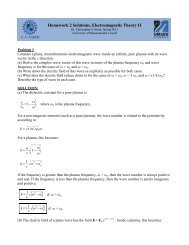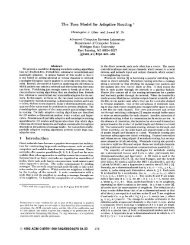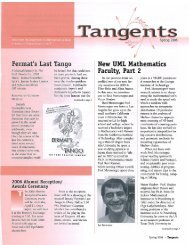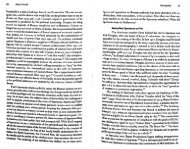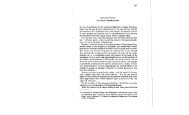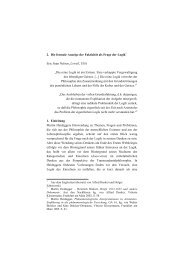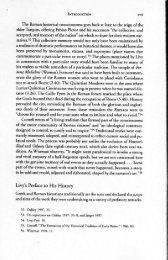312 Affilia: Journal of Women <strong>and</strong> Social Work Figure 7 Home Sweet Home discussions to reflect on the pictorial data collected by participants. Both researchers <strong>and</strong> members of a community leave these discussions with rich data <strong>and</strong> a desire for social change. Moreover, photovoice offers a unique tool for underst<strong>and</strong>ing a social problem from the perspectives of research participants that will inform quantitative data but, what is more important, may lead to culturally appropriate solutions because the participants are involved in the collection, interpretation, <strong>and</strong> dissemination of the findings. For instance, the participants recommended that increasing food stamp benefits (to include cash) to pay for organic <strong>and</strong> healthier foods would decrease food insecurities. In addition, providing food vouchers to use at farmers’ markets may help them afford to eat healthier <strong>and</strong> provide better access to fresh fruits <strong>and</strong> vegetables. They also reported that the limited food stamp program, the poor food supplies, the unkempt corner stores, <strong>and</strong> inadequate shelter accommodations ought not to be ignored. As a result of this study, two important action plans were implemented. The participants wrote letters to their local assembly members to communicate the findings to policy makers. They also presented their photovoice project at the second annual Conference on Health Disparities at Teachers College, Columbia University. Although our research was one of only a h<strong>and</strong>ful of studies to use photovoice methods for participatory action research, it was not without its limitations. One limitation was the small sample of nonr<strong>and</strong>omly selected women from one agency in Central Harlem. Some participants were living in homeless family shelters with a limited ability to cook their own meals. As a result, generalizations cannot necessarily be made to low-income women who do not reside in homeless family shelters. However, given the remarkable burden of food insecurity that low-income women face, further examination of the chronic health disparities <strong>and</strong> health risks for this population from low-income neighborhoods is an important area for social work <strong>and</strong> public health research. 312 Downloaded from aff.sagepub.com at UNIV MASSACHUSETTS LOWELL on September 23, 2011
<strong>Valera</strong> et al. / ‘‘Trying to Eat Healthy’’ 313 Conclusion As a participatory action research project, ‘‘Trying to Eat Healthy’’ helped to promote what Wang (2003) referred to as social action through photovoice, the process by which individuals become change agents <strong>and</strong> take a proactive approach to finding solutions to social problems by fostering critical underst<strong>and</strong>ing, dialogue, <strong>and</strong> collective action. This photovoice project built on the assets, strengths, <strong>and</strong> resources of the community. A collaborative partnership was established, <strong>and</strong> the knowledge of the researchers <strong>and</strong> participants was integrated for the mutual benefit of both. The project was one way to shed light on the topic of food insecurity in a city that is filled with healthy foods, wealth, <strong>and</strong> abundance. References Adams, E. J., Grummer-Strawn, L., & Chavez, G. (2003). Food insecurity is associated with increased risk of obesity in California women. Journal of Nutrition, 133, 1070-1074. Adler, M. (2006). Hunger on the rise in New York city. Retrieved March 15, 2008, from http://www.npr.org/templates/story/story.php?storyId¼670421 Casey, P. H., Szeto, K., Lensing, S., Bogle, M., & Weber, J. (2001). Children in food-insufficient, low-income families: Prevalence, health, <strong>and</strong> nutrition status. Archives of Pediatrics & Adolescence Medicine, 155, 508-514. Drewnowski, A., & Darmon, N. (2005). Food choices <strong>and</strong> diet costs: An economic analysis. Journal of Nutrition, 135, 900-904. Food Bank Association. (2007). Anti-hunger policy platform for New York state <strong>and</strong> city 2007. Retrieved April 25, 2008, from http://www.foodbankassocnys.org/hunger-in-ny.cfm#session.homeurl#files/anti-hunger-policy- 2007-2012.pdf Freire, P. (1970). Pedagogy of the oppressed. New York: Seabury. Gordon, C., Ghai, N., Purciel, M., Talwalker, A., & Goodman, A. (2007). Eating well in Harlem: How available is healthy food? New York: New York City Department of Health <strong>and</strong> Mental Hygiene. Governance <strong>and</strong> Local Democracy Project. (1999). Technology of participation: Basic group facilitation methods, level one: Manual for course participants. Manila, Philippines: United States Agency for International Development. Hill, J. O., Wyatt, H. R., Reed, G. W., & Peters, J. C. (2003). Obesity <strong>and</strong> the environment: Where do we go from here? Science, 299, 853-855. Horowitz, C. R., Colson, K. A., Hebert, P. L., & Lancaster, K. (2004). Barriers to buying healthy foods for people with diabetes: Evidence of environmental disparities. American Journal of Public Health, 94, 1549-1554. Inglis, V., Ball, K., & Crawford, D. (2005). Why do women of low socioeconomic status have poorer dietary behaviors than women of higher socioeconomic status? A qualitative exploration. Appetite, 45, 334-343. Kaufman, L., & Karpati, A. (2007). Underst<strong>and</strong>ing the sociocultural roots of childhood obesity: Food practices among Latino families of Bushwick, Brooklyn. Social Science <strong>and</strong> Medicine, 67, 2177-2188. Kreuger, R. A. (1999). Focus groups: A practical guide for applied research. Thous<strong>and</strong> Oaks, CA: SAGE. Kwate, N. O. A. (2008). Fried chicken <strong>and</strong> fresh apples: Racial segregation as a fundamental cause of fast food density in black neighborhoods. Health & Place, 14, 32-44. Lewis, L. B., Sloane, D. C., Nascimento, L. M., Diamant, A. L., Guinyard, J. J., Yance, A., et al. (2005). African Americans’ access to healthy food options in South Los Angeles. American Journal of Public Health, 95, 668- 673. Lynch, J., Smith, G. D., Harper, S., Hillemeier, M., Ross, N., Kaplan, G. A., et al. (2004). Is income inequality a determinate of population health? Part I. A systematic review. Milbank Quarterly, 82, 5-99. Miles, M. B., & Huberman, A. M. (1984). Qualitative data analysis: A sourcebook of new methods. Beverly Hills, CA: SAGE. Morgan, D. L. (1997). Planning focus groups. Thous<strong>and</strong> Oaks, CA: SAGE. Morl<strong>and</strong>, K., & Filomena, S. (2007). Disparities in the availability of fruits <strong>and</strong> vegetables between racially segregated urban neighborhoods. Public Health Nutrition, 10, 1481-1489. 313 Downloaded from aff.sagepub.com at UNIV MASSACHUSETTS LOWELL on September 23, 2011



